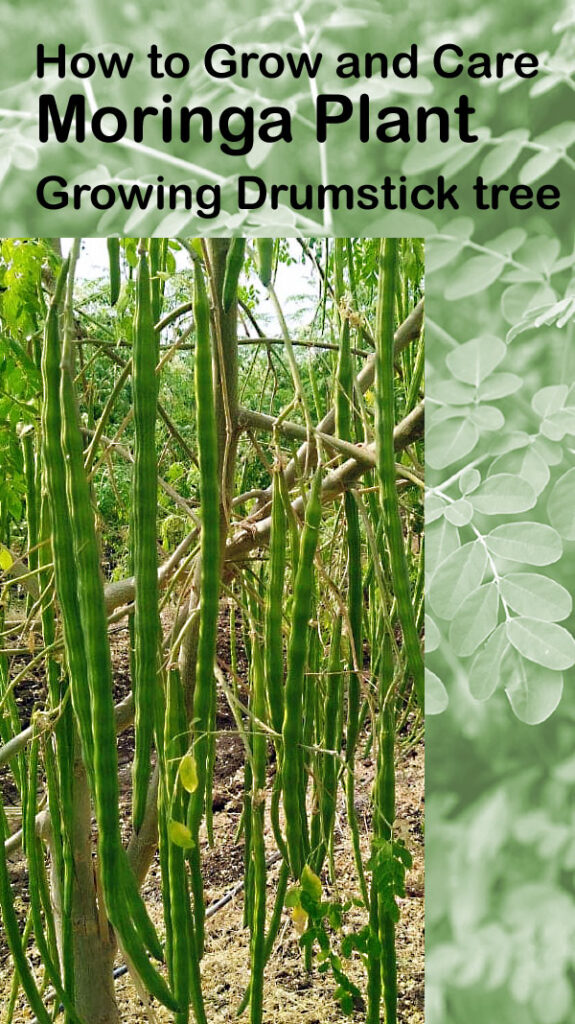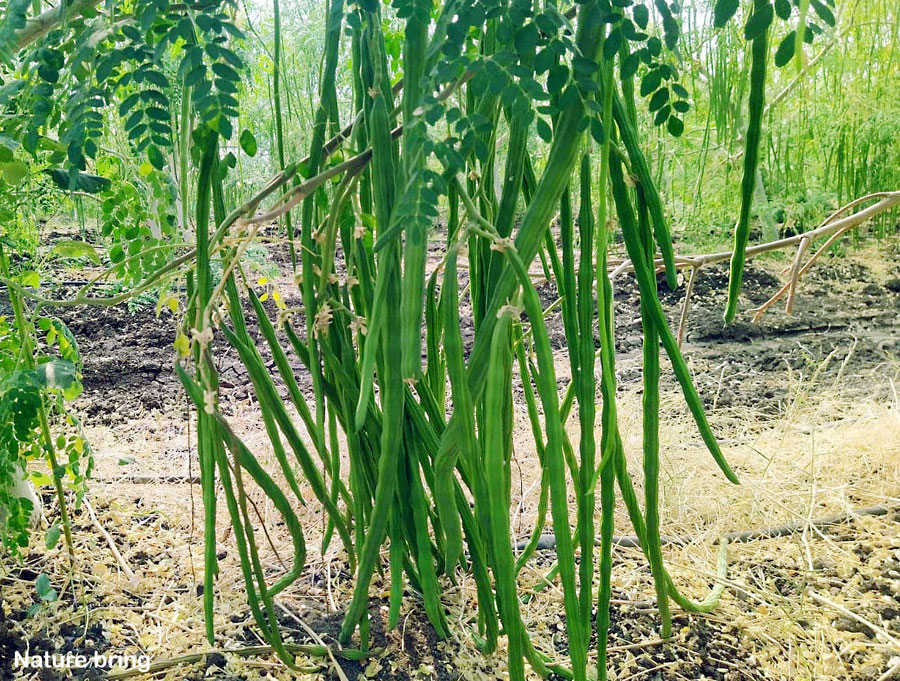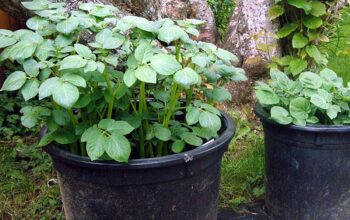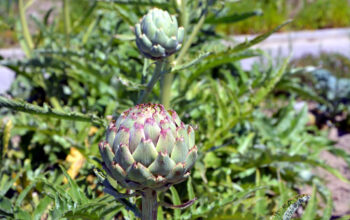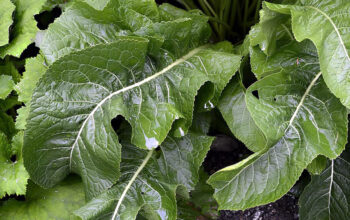Moringa Plant (Moringa oleifera)
Originally from the Indian subcontinent, Moringa oleifera is an extremely fast-growing, drought- resistant tree in the Moringaceae family. Moringa is also known as the drumstick tree, the horseradish tree, and the benzolive tree. Several forms of traditional herbal medicine are made from its seeds, leaves, and young pods. Additionally, it can be used to purify water.
The trunk diameter of the tree is 45 centimeters and it can reach heights of 10–12 meters. There is a whitish-gray color to the bark, and thick cork surrounds it. The bark of young shoots is purple or greenish-white, and it has a lot of hair. Drooping, fragile branches form an open crown of the tree, and three-layered leaves create feathery foliage. In addition to being fragrant and hermaphroditic, the flowers are yellowish-white in color and surrounded by five unequal petals that are thinly veined.
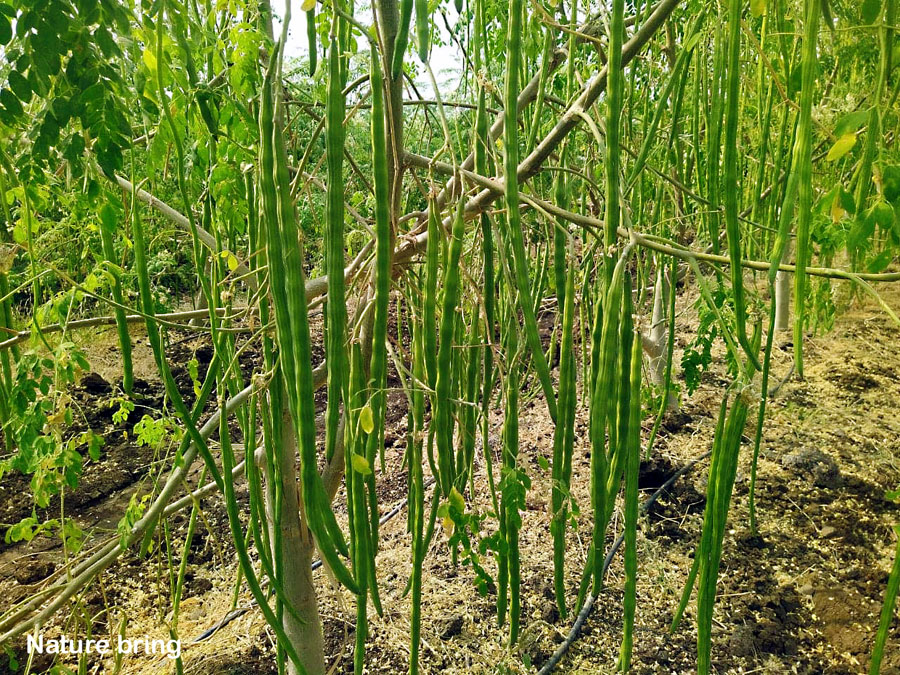
Overview Moringa oleifera
Scientific name Moringa oleifera
Common name Horseradish tree, Drumstick tree, Munga, Moringa.
Plant type Vegetable herb plant
Sun Full sun
Soil Well-drained slightly acidic soil
Soil pH 6.2 to 7
Flower colour White to cream
Blooming time Spring through early summer
Zone 9- 10
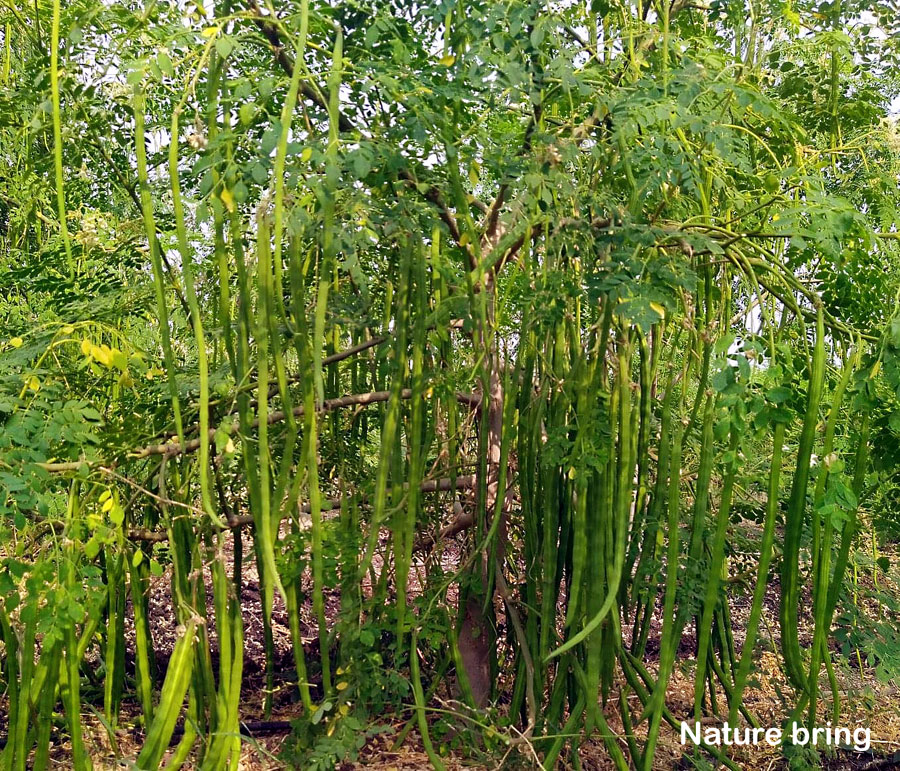
How to Grow and Care Moringa Plant
Whether they are grown from seeds or cuttings, moringa trees are easy to grow. It grows at least 10 feet per year, making it one of the fastest growing trees in the world. Spring is the best time to plant trees so that the entire growing season can be devoted to them. It requires little maintenance to maintain a Moringa plant, especially if grown year-round outdoors. Moringa plants need to be moved indoors during cool weather if you are gardening in a climate that is not tropical or subtropical.
Growing from seeds
Seeds of moringa plants grow easily. As soon as seeds are harvested from the tree, they should be planted because moringa seeds have no dormancy period. It is possible to germinate fresh seeds for up to one year. Seeds can be sown directly into the garden, but seedlings seem to do best if they are started indoors to avoid harsh winds, temperatures, and wildlife. Seeds should be soaked in water overnight to accelerate germination. Sow seeds 1 inch deep in seed-starting soil. Make sure the mix is well covered and watered. Typically, germination takes three to fourteen days if the soil is warm at the bottom. Prepare the plant for transplanting outside by hardening it off.
Growing from cuttings
Depending on the climate, moringa trees can be propagated indoors or outdoors using cuttings, but potted indoor propagation is more effective. Cut a moringa cutting approximately 5 inches in diameter and 8–12 inches long. All foliage but one stem should be removed. A good potting mix with sand added to help drainage should be used in a deep pot. Take the cut end of the branch, scrape off the outer bark, and dip it in rooting hormone. For the first two to three weeks, the pot should be kept in a shaded area that receives ambient light or in a greenhouse. Plants should be hardened off before transplanting outside in the sun.
Sunlight
The best location for moringa trees is one where they receive direct sunlight most of the day. Insufficient light may stunt plant growth. The Moringa plant needs at least 6-7 hours of direct sunlight daily in order to grow into a strong tree. Throughout the day, keep them in an area where they will receive sufficient sunlight.
Watering
It is necessary to water moringa trees a lot in the early stages of their growth. Until the seedling emerges, you will need to water them daily, then every other day. You can start watering them once a week after they reach about 18 inches tall.
Soil
In order for moringa to grow well, the soil must be well-drained and slightly acidic (pH 6.2–7). An ideal garden soil is loamy and well-weathered, with plenty of compost added. To ensure excess water drains away from the roots, plant it on a mound in high rainfall areas.
Fertilizer
Adding a light dose of an all-purpose fertilizer can help support moringa growth. It is not necessary to fertilize moringa plants regularly once they have been established. A fertilizer with an NPK of 2: 1: 1 or 3: 1: 1 will be best for Moringa trees.
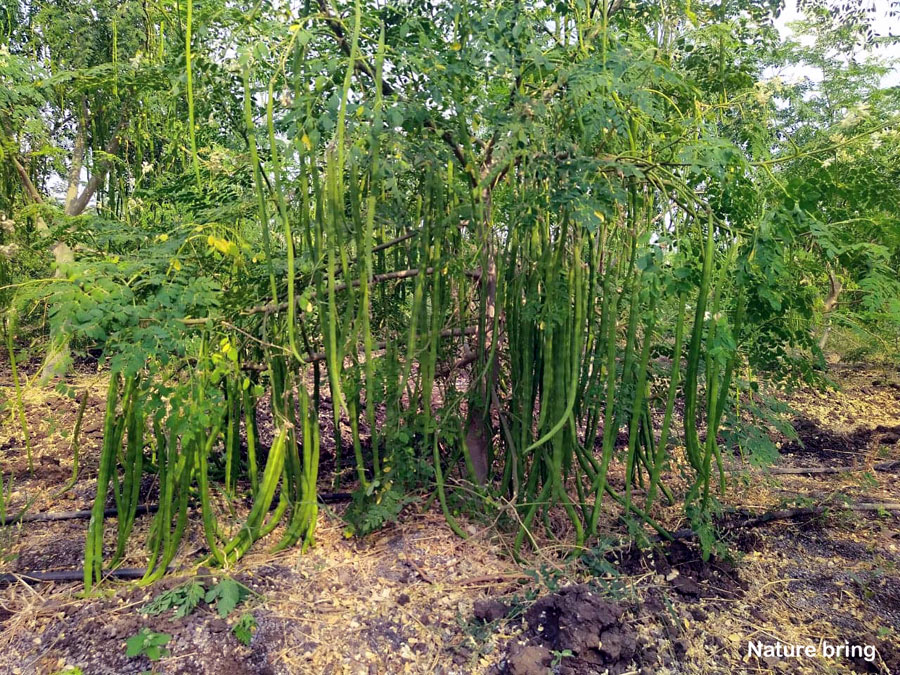
Pruning
A good time to prune the apical growing shoot is when the tree is 1.0–2.0 m high, as this will encourage the development of many branches and pods within easy reach of the ground. Cut smoothly with a knife, machete, or pruning saw. The cut will trigger new growth just below the area of the cut. Following this, cut the growing tips of the branches to give them a bushier appearance. In addition to this, when a branch reaches 60 cm, cut it back by 30 cm.
Read also:
How to grow Dieffenbachia houseplants. Growing Vanilla beans plant in your backyard. Anises plants growing guide. How to grow Healthy roses 10 tips. Cluster bens growing and care tips. Growing and caring for orchids.
For pin:
